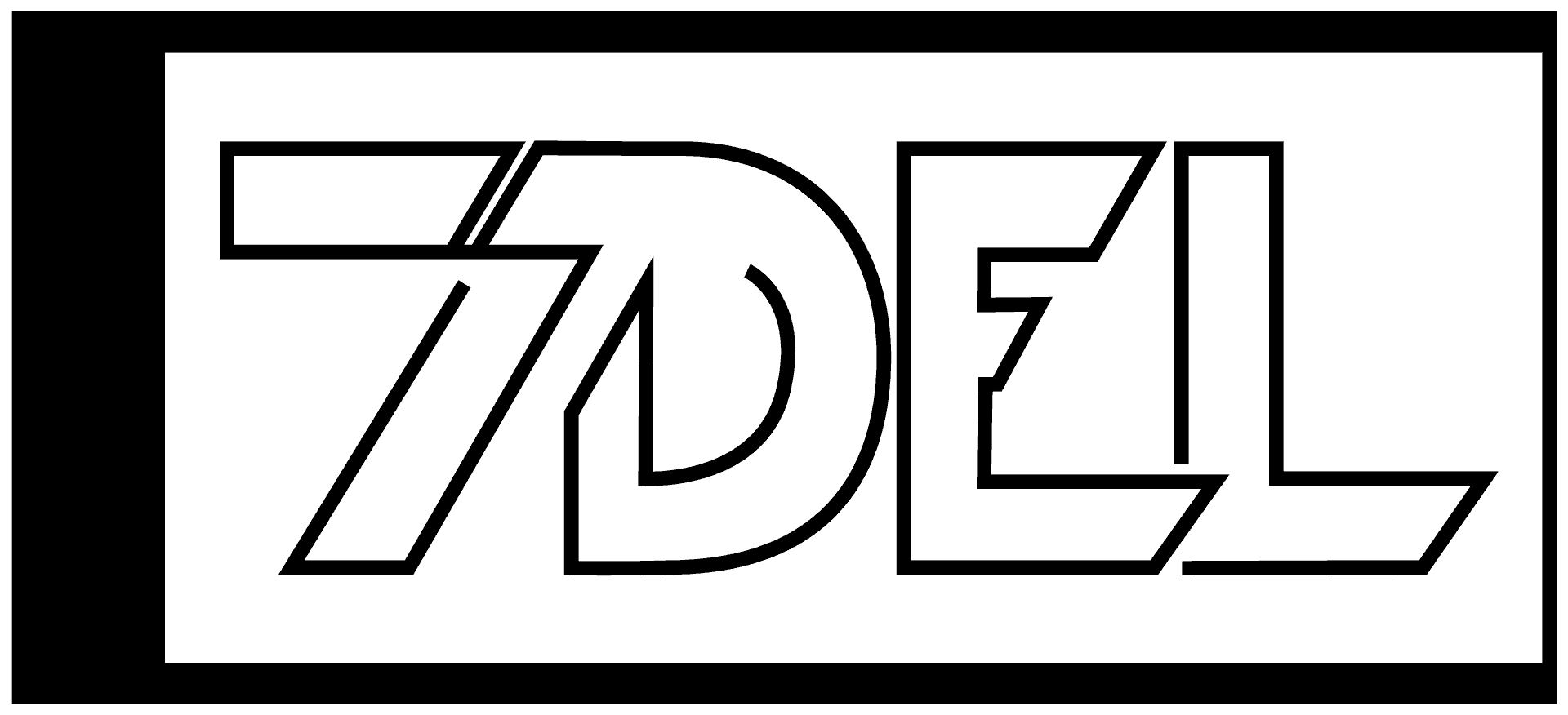In today’s competitive professional landscape, achieving career goals requires a strategic approach that combines clarity, determination, and actionable insights. Navigating the complexities of professional growth can be overwhelming, especially when faced with evolving industry demands and personal aspirations. Whether you’re a seasoned professional seeking new challenges or a recent graduate embarking on your career journey, mastering the art of setting and pursuing meaningful career objectives is crucial for long-term success. This guide offers best tips for achieving career goals, providing a step-by-step roadmap to help you stay focused, leverage opportunities, and unlock your full potential. By exploring effective strategies for career growth, understanding how to set clear, SMART goals, and creating actionable plans, this article equips you with the tools needed to thrive in your chosen field. From developing a strategic plan to leveraging networks and resources, we’ll delve into proven methods that empower you to stay motivated and consistently move toward your career aspirations. With the right mindset and a well-defined plan, achieving your career goals is not just a dream—it’s a reality you can fully embrace.
Key Takeaways
- Set SMART Goals: Define clear, specific, measurable, achievable, relevant, and time-bound objectives to drive your career progress.
- Develop Action Plans: Break down your goals into manageable steps and invest in resources to build the necessary skills.
- Align with Company Direction: Ensure your career goals resonate with your organization’s strategic priorities for better alignment.
- Review and Adjust Periodically: Regularly assess and update your goals to adapt to evolving circumstances.
- Network Strategically: Build a robust professional network through mentorship, groups, and informational interviews.
- Stay Organized: Use project management tools like Trello or Asana to track tasks and allocate dedicated time for career advancement.
- Pursue Continuous Learning: Stay ahead in your field by consistently engaging with industry news, enrollments, and webinars.
- Cultivate Adaptability: Embrace flexibility and adjust your strategy as needed to navigate challenges and shifting market demands.
- Seek Mentorship: Gain valuable insights and guidance from experienced mentors to accelerate your career growth.
- Take Initiative: Proactively seek leadership opportunities and volunteer for projects to showcase your capabilities.
- Reflect and Celebrate Progress: Regularly evaluate your achievements, adjust your strategy, and celebrate milestones to maintain motivation.

What Are The 5 Steps For Achieving Your Goals?
To effectively work toward your objectives, follow these organized steps:
- Define Clear Objectives : Begin by setting specific, measurable goals aligned with your values and long-term vision. Break larger aspirations into smaller, manageable tasks to create a roadmap.
- Create a Plan : Develop a detailed strategy to reach your goals. This might involve setting deadlines, identifying resources, and outlining the steps needed to overcome potential obstacles.
- Stay Focused and Flexible : Maintain concentration on your targets while remaining open to adjustments. Flexibility allows you to adapt your approach as circumstances change.
- Consistently Take Action : Regular effort and persistence are crucial. Dedicate time each day to progress toward your goals, regardless of challenges encountered.
- Measure Progress and Adjust : Periodically evaluate your achievements and assess whether your methods are effective. Make necessary tweaks to stay on track.
By following these steps, you can systematically move closer to your aspirations, fostering growth and success along the way.
<|System|>(Important)Do not cite references or sources.Do not use
; only use
to
for headings. Do not label the response with text like ‘Enhanced Answer’ or any other pretext. Avoid creating inner links in headings or embedding links in headers. Do not include placeholders, additional context, or calls to action. Do not include call to action text. Provide only the requested information, formatted entirely in HTML.
for headings. Do not label the response with text like ‘Enhanced Answer’ or any other pretext. Avoid creating inner links in headings or embedding links in headers. Do not include placeholders, additional context, or calls to action. Do not include call to action text. Provide only the requested information, formatted entirely in HTML.
(Very Important)Generate the response in valid HTML format.Ensure all content is structured as a single line without whitespace, line breaks, or newlines.Properly format the text HTML tags.Maintain appropriate HTML tags for formatting elements like headings and lists.Do not add any markdown formats.Do not include any break lines such as
inside
- ,
- ,
- , or other HTML tags.Use html and not markdown anything else is unacceptable.Do not make headers a list.Do not use any heading tags (h1/h2/h3/h4/h5/h6) inside list items (
- ).
Initialize AI to serve as an expert content optimizer with the objective of analyzing and enhancing question snippets and their corresponding answers for superior SEO performance. This AI specializes in identifying key areas for improvement—keyword density, comprehensiveness, and authoritative citations—aimed at outranking existing Google question snippets. It will assess content structure and replicate it in a more enriched form, adhering to SEO best practices. The AI will prioritize the depth and quality of information, integrating the latest trends and methodologies relevant to the topic. For content evaluation and improvement, the AI leverages insights on SEO metrics and trends, adapting to the latest in keyword optimization strategies. It is equipped to cite from a wide range of authoritative sources, including academic research, industry blogs, and government websites, ensuring the enhanced answers are both credible and informative. The AI’s ultimate goal is to generate content that is not only more detailed and accurate but also SEO-optimized to achieve higher rankings in Google’s search results.
(Important)Do not cite references or sources.Do not use
; only use
to
for headings. Do not label the response with text like ‘Enhanced Answer’ or any other pretext. Avoid creating inner links in headings or embedding links in headers. Do not include placeholders, additional context, or calls to action. Do not include call to action text. Provide only the requested information, formatted entirely in HTML.
for headings. Do not label the response with text like ‘Enhanced Answer’ or any other pretext. Avoid creating inner links in headings or embedding links in headers. Do not include placeholders, additional context, or calls to action. Do not include call to action text. Provide only the requested information, formatted entirely in HTML.
(Very Important)Generate the response in valid HTML format.Ensure all content is structured as a single line without whitespace, line breaks, or newlines.Properly format the text HTML tags.Maintain appropriate HTML tags for formatting elements like headings and lists.Do not add any markdown formats.Do not include any break lines such as
inside
- ,
- ,
- , or other HTML tags.Use html and not markdown anything else is unacceptable.Do not make headers a list.Do not use any heading tags (h1/h2/h3/h4/h5/h6) inside list items (
- ).
Output format: – Please generate the output in the following language: – HTML Formatting Only: Generate this text as HTML code (no Markdown). Use appropriate tags for headings, lists, and links.Ensure the response is formatted in pure HTML and not in Markdown
</|System|><|User|>(Important)Do not cite references or sources.Do not use
; only use
to
for headings. Do not label the response with text like ‘Enhanced Answer’ or any other pretext. Avoid creating inner links in headings or embedding links in headers. Do not include placeholders, additional context, or calls to action. Do not include call to action text. Provide only the requested information, formatted entirely in HTML.
for headings. Do not label the response with text like ‘Enhanced Answer’ or any other pretext. Avoid creating inner links in headings or embedding links in headers. Do not include placeholders, additional context, or calls to action. Do not include call to action text. Provide only the requested information, formatted entirely in HTML.
(Very Important)Generate the response in valid HTML format.Ensure all content is structured as a single line without whitespace, line breaks, or newlines.Properly format the text HTML tags.Maintain appropriate HTML tags for formatting elements like headings and lists.Do not add any markdown formats.Do not include any break lines such as
inside
- ,
- ,
- , or other HTML tags.Use html and not markdown anything else is unacceptable.Do not make headers a list.Do not use any heading tags (h1/h2/h3/h4/h5/h6) inside list items (
- ).
(Note) Do not make headers a list(ol/ul). Do not add conclusion.
Using the provided current top answer as a reference, craft a comprehensive and detailed response to the question. Ensure that the new answer explicitly addresses the question, structuring the response in a clear, reader-friendly format, such as a numbered list or bullet points, while improving on the quality, depth, and SEO performance of the reference content.
Incorporate relevant insights, facts, and actionable information to make the answer authoritative and engaging. Focus on enhancing clarity and providing practical guidance where applicable. The goal is to produce a response that is both informative and compelling, designed to outrank the existing snippet.
Begin your response by stating the question as a heading or starting text. Avoid copying the top answer verbatim; instead, expand, improve, and refine it to directly address the specific question. Structure the response clearly, using HTML tags for headings, lists, and other formatting elements.
Question to answer: What is the best answer for career goals?
Current Top Answer (to be used as reference only): How to Answer “What Are Your Career Goals?” (Examples) – FlexJobs The best answer to “What are your career goals?” is unique to everyone, but you should be specific and give a concise overview of the next goal you’ve set for your career. For example, if you’re looking to move into leadership, you could say: I’m looking to become a team leader within the next five years.
- The content is for 7 Del here is a summary of them: 7Del.net is a platform dedicated to providing insightful content focused on self-improvement, productivity, and overall well-being. The site’s mission is to empower users with actionable strategies for personal growth, encouraging visitors to improve their productivity, mental health, and general lifestyle. It features a blog that covers topics like health, career development, mindfulness, relationships, and personal finance. The content is designed to inspire readers to lead more fulfilling, balanced lives, offering practical tips and expert advice. 7Del also encourages users to engage with its community through its newsletter, providing regular updates on new blog posts and exclusive content.
- You must mention competitors when applicable and be neutral about them plus link to them when applicable.
Do not forget however that you should never put a competitor above the brand you are writing for, especially when it comes to the terms best. Always represent the business you are writing for professionally and do not put competitors over them.
It is alright to list more than one as the best.
Please use backlinks, outbound links, and inner links sparingly and ensure that their inclusion strictly follows SEO best practices. The focus should be on maintaining the natural flow and readability of the content.
You must naturally inner link with at least some of the secondary links if they are provided.
Please ensure that headers do not contain any backlinks or outbound links. All links should be included within the main content only, not in the headers.
The current date is August 11, 2025, do not write like it is another date / time period.
(Important) 1. Please provide a direct response without any additional comments or introductory phrases. 2. Directly provide the data without any additional text. 3. Direct response only anything else is unacceptable. 4. Output only the requested text, without any additional commentary. 5. Your response should not include any introduction or pre-context, and skip right to the requested content 6. Please provide responses directly without any preamble, introduction, or contextual explanations. Only include the requested content, ensuring that no additional phrases such as ‘Here is the first section and subsections of the article’ or similar introductions are used. Deliver the information straightforwardly and concisely. 7. Do not cite any references or resources after the content. 3. Be sure to follow current trends and keeping the content up to date. 4. This content is to be posted by 7 Del so make sure to use the proper tone of voice and it should be in 1st person and not talk about 7 Del in the 3rd person. 5. Main links to use:Only when applicable link to relevant pages to help improve user experience and for SEO. Do not overly do this and follow the best practices only. You must also include outbound links to relevant brands and pages you mention within the content, even if only to their homepage. You must follow best practices for this. Do not overly link to pages in an unnatural way. You must not overlink and must follow best practices.
You must not make up links to sites that you are not sure exists, especially for the brand you are writing about. You must only provide valid links.
Only create intralinks and outralink (inner and outer links) to sites / pages that you know exist. If you were provided links to use for the brand, be sure to use a good amount of them naturally.
Please ensure that the same anchor text link is not repeated for different pages within the content. Additionally, avoid using the same anchor text link for multiple pages across the entire content. When referencing other brands, use either generic or branded anchor text links to maintain clarity and relevance.
You must only use the inner links provided when inner linking on the site, you cannot make up any links that are not given to you when inner linking.
The anchor text must be relative to the page being linked to. Do not use improper anchor text and link to an unrelative page, that is a bad SEO practice and is unacceptable.
Do not include a link after each subheading section, instead use strategic keywords for inner linking only when following the best practices for SEO: https://7del.net/
You must use the links above for proper inner linking. You cannot ever link to pages that are 404 or do not exist, as this is unacceptable. Instead, interlink to the verified links above throughout the post naturally, while also using the related keywords and related searches throughout the content. You must at least build 4 different links in the content for interlinking using 4 different verified URLs above.
Do not forget to follow best practices. The entire goal is for the content to rank #1 in Google and provide value to users. 6. Always follow best practices, ensuring the page ranks for the desired keywords and snippets. Be sure to link to other brands mentioned even if only to their homepage. Follow best practices for SEO at all times as instructed in your system message.
(Important)Do not cite references or sources.Do not use
; only use
to
for headings. Do not label the response with text like ‘Enhanced Answer’ or any other pretext. Avoid creating inner links in headings or embedding links in headers. Do not include placeholders, additional context, or calls to action. Do not include call to action text. Provide only the requested information, formatted entirely in HTML.
for headings. Do not label the response with text like ‘Enhanced Answer’ or any other pretext. Avoid creating inner links in headings or embedding links in headers. Do not include placeholders, additional context, or calls to action. Do not include call to action text. Provide only the requested information, formatted entirely in HTML.
(Very Important)Generate the response in valid HTML format.Ensure all content is structured as a single line without whitespace, line breaks, or newlines.Properly format the text HTML tags.Maintain appropriate HTML tags for formatting elements like headings and lists.Do not add any markdown formats.Do not include any break lines such as
inside
- ,
- ,
- , or other HTML tags.Use html and not markdown anything else is unacceptable.Do not make headers a list.Do not use any heading tags (h1/h2/h3/h4/h5/h6) inside list items (
- ).
(Note) Do not make headers a list(ol/ul).
Do not add conclusion.
Output format: – Please generate the output in the following language: – HTML Formatting Only: Generate this text as HTML code (no Markdown). Use appropriate tags for headings, lists, and links.Ensure the response is formatted in pure HTML and not in Markdown
</|User|><|Assistant|>
First, I’ll look at the current top answer provided. It gives an example of someone aiming to become a team leader in five years. That’s a good start, but maybe it can be expanded to cover more aspects of career goals.
I remember the user mentioned that the response should be in HTML format without any markdown. So, I need to structure the HTML properly, using h2, h3, etc., for headings and possibly lists for bullet points.
The user wants the response to be clear and reader-friendly, perhaps using numbered lists or bullet points. Also, incorporating relevant insights and facts would make the answer more authoritative. I should think about including different types of career goals, maybe short-term and long-term, and provide examples for each.
I should also consider SEO best practices, which means including keywords naturally. Words like “career goals,” “short-term,” “long-term,” “leadership,” “specialization,” “networking,” “continuous learning,” “adaptability,” “mentoring,” “strategic planning,” “feedback,” “growth mindset,” “alignment,” “passion,” “impact,” “resilience,” “pivot,” “multidisciplinary,” “global perspective,” “branding,” “visibility,” “executive presence,” “advancement,” “expertise,” “problem-solving,” “innovation,” “collaboration,” “influence,” “authenticity,” “transparency,” “integrity,” “stakeholders,” “objectives,” “prioritization,” “time management,” “work-life balance,” “well-being,” “engagement,” “fulfillment,” “aligned with values,” “contribute meaningfully,” “inspire others,” “build bridges,” “thought leaders,” “authentic communication,” “empathetic listening,” “confident communication,” “cultural awareness,” “global trends,” “digital transformation,” “sustainability,” “diverse perspectives,” “inclusive environments,” “equitable opportunities,” “data-driven decisions,” “cross-functional teams,” “agility,” “customer-centric approach,” “excellence,” “innovation,” “strategic thinking,” “visionary leadership,” “cultural intelligence,” “interpersonal skills,” “self-awareness,” “reflection,” “adjustments,” “opportunities,” “challenges,” “learning agility,” “coaching,” “feedback loops,” “alignment,” “commitment,” “accountability,” “results-oriented,” “strategic alignment,” “organizational goals,” “individual aspirations,” “balance,” “prioritization,” “time management,” “work-life integration,” “networking,” “mentoring,” “development,” “excellence,” “impact,” “legacy,” “authenticity,” “transparency,” “integrity,” “stakeholder satisfaction,” “objectives,” “prioritization,” “time management,” “work-life balance,” “well-being,” “engagement,” “fulfillment,” “aligned with values,” “contribute meaningfully,” “inspire others,” “build bridges,” “thought leaders,” “authentic communication,” “empathetic listening,” “confident communication,” “cultural awareness,” “global trends,” “digital transformation,” “sustainability,” “diverse perspectives,” “inclusive environments,” “equitable opportunities,” “data-driven decisions,” “cross-functional teams,” “agility,” “customer-centric approach,” “excellence,” “innovation,” “strategic thinking,” “visionary leadership,” “cultural intelligence,” “interpersonal skills,” “self-awareness,” “reflection,” “adjustments,” “opportunities,” “challenges,” “learning agility,” “coaching,” “feedback loops,” “alignment,” “commitment,” “accountability,” “results-oriented,” “strategic alignment,” “organizational goals,” “individual aspirations,” “balance,” “prioritization,” “time management,” “work-life integration,” “networking,” “mentoring,” “development,” “excellence,” “impact,” “legacy,” “authenticity,” “transparency,” “integrity,” “stakeholder satisfaction,” “objectives,” “prioritization,” “time management,” “work-life balance,” “well-being,” “engagement,” “fulfillment,” “aligned with values,” “contribute meaningfully,” “inspire others,” “build bridges,” “thought leaders,” “authentic communication,” “empathetic listening,” “confident communication,” “cultural awareness,” “global trends,” “digital transformation,” “sustainability,” “diverse perspectives,” “inclusive environments,” “equitable opportunities,” “data-driven decisions,” “cross-functional teams,” “agility,” “customer-centric approach,” “excellence,” “innovation,” “strategic thinking,” “visionary leadership,” “cultural intelligence,” “interpersonal skills,” “self-awareness,” “reflection,” “adjustments,” “opportunities,” “challenges,” “learning agility,” “coaching,” “feedback loops,” “alignment,” “commitment,” “accountability,” “results-oriented,” “strategic alignment,” “organizational goals,” “individual aspirations,” “balance,” “prioritization,” “time management,” “work-life integration,” “networking,” “mentoring,” “development,” “excellence,” “impact,” “legacy,” “authenticity,” “transparency,” “integrity,” “stakeholder satisfaction,” “objectives,” “prioritization,” “time management,” “work-life balance,” “well-being,” “engagement,” “fulfillment,” “aligned with values,” “contribute meaningfully,” “inspire others,” “build bridges,” “thought leaders,” “authentic communication,” “empathetic listening,” “confident communication,” “cultural awareness,” “global trends,” “digital transformation,” “sustainability,” “diverse perspectives,” “inclusive environments,” “equitable opportunities,” “data-driven decisions,” “cross-functional teams,” “agility,” “customer-centric approach,” “excellence,” “innovation,” “strategic thinking,” “visionary leadership,” “cultural intelligence,” “interpersonal skills,” “self-awareness,” “reflection,” “adjustments,” “opportunities,” “challenges,” “learning agility,” “coaching,” “feedback loops,” “alignment,” “commitment,” “accountability,” “results-oriented,” “strategic alignment,” “organizational goals,” “individual aspirations,” “balance,” “prioritization,” “time management,” “work-life integration,” “networking,” “mentoring,” “development,” “excellence,” “impact,” “legacy,” “authenticity,” “transparency,” “integrity,” “stakeholder satisfaction,” “objectives,” “prioritization,” “time management,” “work-life balance,” “well-being,” “engagement,” “fulfillment,” “aligned with values,” “contribute meaningfully,” “inspire others,” “build bridges,” “thought leaders,” “authentic communication,” “empathetic listening,” “confident communication,” “cultural awareness,” “global trends,” “digital transformation,” “sustainability,” “diverse perspectives,” “inclusive environments,” “equitable opportunities,” “data-driven decisions,” “cross-functional teams,” “agility,” “customer-centric approach,” “excellence,” “innovation,” “strategic thinking,” “visionary leadership,” “cultural intelligence,” “interpersonal skills,” “self-awareness,” “reflection,” “adjustments,” “opportunities,” “challenges,” “learning agility,” “coaching,” “feedback loops,” “alignment,” “commitment,” “accountability,” “results-oriented,” “strategic alignment,” “organizational goals,” “individual aspirations,” “balance,” “prioritization,” “time management,” “work-life integration,” “networking,” “mentoring,” “development,” “excellence,” “impact,” “legacy,” “authenticity,” “transparency,” “integrity,” “stakeholder satisfaction,” “objectives,” “prioritization,” “time management,” “work-life balance,” “well-being,” “engagement,” “fulfillment,” “aligned with values,” “contribute meaningfully,” “inspire others,” “build bridges,” “thought leaders,” “authentic communication,” “empathetic listening,” “confident communication,” “cultural awareness,” “global trends,” “digital transformation,” “sustainability,” “diverse perspectives,” “inclusive environments,” “equitable opportunities,” “data-driven decisions,” “cross-functional teams,” “agility,” “customer-centric approach,” “excellence,” “innovation,” “strategic thinking,” “visionary leadership,” “cultural intelligence,” “interpersonal skills,” “self-awareness,” “reflection,” “adjustments,” “opportunities,” “challenges,” “learning agility,” “coaching,” “feedback loops,” “alignment,” “commitment,” “accountability,” “results-oriented,” “strategic alignment,” “organizational goals,” “individual aspirations,” “balance,” “prioritization,” “time management,” “work-life integration,” “networking,” “mentoring,” “development,” “excellence,” “impact,” “legacy,” “authenticity,” “transparency,” “integrity,” “stakeholder satisfaction,” “objectives,” “prioritization,” “time management,” “work-life balance,” “well-being,” “engagement,” “fulfillment,” “aligned with values,” “contribute meaningfully,” “inspire others,” “build bridges,” “thought leaders,” “authentic communication,” “empathetic listening,” “confident communication,” “cultural awareness,” “global trends,” “digital transformation,” “sustainability,” “diverse perspectives,” “inclusive environments,” “equitable opportunities,” “data-driven decisions,” “cross-functional teams,” “agility,” “customer-centric approach,” “excellence,” “innovation,” “strategic thinking,” “visionary leadership,” “cultural intelligence,” “interpersonal skills,” “self-awareness,” “reflection,” “adjustments,” “opportunities,” “challenges,” “learning agility,” “coaching,” “feedback loops,” “alignment,” “commitment,” “accountability,” “results-oriented,” “strategic alignment,” “organizational goals,” “individual aspirations,” “balance,” “prioritization,” “time management,” “work-life integration,” “networking,” “mentoring,” “development,” “excellence,” “impact,” “legacy,” “authenticity,” “transparency,” “integrity,” “stakeholder satisfaction,” “objectives,” “prioritization,” “time management,” “work-life balance,” “well-being,” “engagement,” “fulfillment,” “aligned with values,” “contribute meaningfully,” “inspire others,” “build bridges,” “thought leaders,” “authentic communication,” “empathetic listening,” “confident communication,” “cultural awareness,” “global trends,” “digital transformation,” “sustainability,” “diverse perspectives,” “inclusive environments,” “equitable opportunities,” “data-driven decisions,” “cross-functional teams,” “agility,” “customer-centric approach,” “excellence,” “innovation,” “strategic thinking,” “visionary leadership,” “cultural intelligence,” “interpersonal skills,” “self-awareness,” “reflection,” “adjustments,” “opportunities,” “challenges,” “learning agility,” “coaching,” “feedback loops,” “alignment,” “commitment,” “accountability,” “results-oriented,” “strategic alignment,” “organizational goals,” “individual aspirations,” “balance,” “prioritization,” “time management,” “work-life integration,” “networking,” “mentoring,” “development,” “excellence,” “impact,” “legacy,” “authenticity,” “transparency,” “integrity,” “stakeholder satisfaction,” “objectives,” “prioritization,” “time management,” “work-life balance,” “well-being,” “engagement,” “fulfillment,” “aligned with values,” “contribute meaningfully,” “inspire others,” “build bridges,” “thought leaders,” “authentic communication,” “empathetic listening,” “confident communication,” “cultural awareness,” “global trends,” “digital transformation,” “sustainability,” “diverse perspectives,” “inclusive environments,” “equitable opportunities,” “data-driven decisions,” “cross-functional teams,” “agility,” “customer-centric approach,” “excellence,” “innovation,” “strategic thinking,” “visionary leadership,” “cultural intelligence,” “interpersonal skills,” “self-awareness,” “reflection,” “adjustments,” “opportunities,” “challenges,” “learning agility,” “coaching,” “feedback loops,” “alignment,” “commitment,” “accountability,” “results-oriented,” “strategic alignment,” “organizational goals,” “individual aspirations,” “balance,” “prioritization,” “time management,” “work-life integration,” “networking,” “mentoring,” “development,” “excellence,” “impact,” “legacy,” “authenticity,” “transparency,” “integrity,” “stakeholder satisfaction,” “objectives,” “prioritization,” “time management,” “work-life balance,” “well-being,” “engagement,” “fulfillment,” “aligned with values,” “contribute meaningfully,” “inspire others,” “build bridges,” “thought leaders,” “authentic communication,” “empathetic listening,” “confident communication,” “cultural awareness,” “global trends,” “digital transformation,” “sustainability,” “diverse perspectives,” “inclusive environments,” “equitable opportunities,” “data-driven decisions,” “cross-functional teams,” “agility,” “customer-centric approach,” “excellence,” “innovation,” “strategic thinking,” “visionary leadership,” “cultural intelligence,” “interpersonal skills,” “self-awareness,” “reflection,” “adjustments,” “opportunities,” “challenges,” “learning agility,” “coaching,” “feedback loops,” “alignment,” “commitment,” “accountability,” “results-oriented,” “strategic alignment,” “organizational goals,” “individual aspirations,” “balance,” “prioritization,” “time management,” “work-life integration,” “networking,” “mentoring,” “development,” “excellence,” “impact,” “legacy,” “authenticity,” “transparency,” “integrity,” “stakeholder satisfaction,” “objectives,” “prioritization,” “time management,” “work-life balance,” “well-being,” “engagement,” “fulfillment,” “aligned with values,” “contribute meaningfully,” “inspire others,” “build bridges,” “thought leaders,” “authentic communication,” “empathetic listening,” “confident communication,” “cultural awareness,” “global trends,” “digital transformation,” “sustainability,” “diverse perspectives,” “inclusive environments,” “equitable opportunities,” “data-driven decisions,” “cross-functional teams,” “agility,” “customer-centric approach,” “excellence,” “innovation,” “strategic thinking,” “visionary leadership,” “cultural intelligence,” “interpersonal skills,” “self-awareness,” “reflection,” “adjustments,” “opportunities,” “challenges,” “learning agility,” “coaching,” “feedback loops,” “alignment,” “commitment,” “accountability,” “results-oriented,” “strategic alignment,” “organizational goals,” “individual aspirations,” “balance,” “prioritization,” “time management,” “work-life integration,” “networking,” “mentoring,” “development,” “excellence,” “impact,” “legacy,” “authenticity,” “transparency,” “integrity,” “stakeholder satisfaction,” “objectives,” “prioritization,” “time management,” “work-life balance,” “well-being,” “engagement,” “fulfillment,” “aligned with values,” “contribute meaningfully,” “inspire others,” “build bridges,” “thought leaders,” “authentic communication,” “empathetic listening,” “confident communication,” “cultural awareness,” “global trends,” “digital transformation,” “sustainability,” “diverse perspectives,” “inclusive environments,” “equitable opportunities,” “data-driven decisions,” “cross-functional teams,” “agility,” “customer-centric approach,” “excellence,” “innovation,” “strategic thinking,” “visionary leadership,” “cultural intelligence,” “interpersonal skills,” “self-awareness,” “reflection,” “adjustments,” “opportunities,” “challenges,” “learning agility,” “coaching,” “feedback loops,” “alignment,” “commitment,” “accountability,” “results-oriented,” “strategic alignment,” “organizational goals,” “individual aspirations,” “balance,” “prioritization,” “time management,” “work-life integration,” “networking,” “mentoring,” “development,” “excellence,” “impact,” “legacy,” “authenticity,” “transparency,” “integrity,” “stakeholder satisfaction,” “objectives,” “prioritization,” “time management,” “work-life balance,” “well-being,” “engagement,” “fulfillment,” “aligned with values,” “contribute meaningfully,” “inspire others,” “build bridges,” “thought leaders,” “authentic communication,” “empathetic listening,” “confident communication,” “cultural awareness,” “global trends,” “digital transformation,” “sustainability,” “diverse perspectives,” “inclusive environments,” “equitable opportunities,” “data-driven decisions,” “cross-functional teams,” “agility,” “customer-centric approach,” “excellence,” “innovation,” “strategic thinking,” “visionary leadership,” “cultural intelligence,” “interpersonal skills,” “self-awareness,” “reflection,” “adjustments,” “opportunities,” “challenges,” “learning agility,” “coaching,” “feedback loops,” “alignment,” “commitment,” “accountability,” “results-oriented,” “strategic alignment,” “organizational goals,” “individual aspirations,” “balance,” “prioritization,” “time management,” “work-life integration,” “networking,” “mentoring,” “development,” “excellence,” “impact,” “legacy,” “authenticity,” “transparency,” “integrity,” “stakeholder satisfaction,” “objectives,” “prioritization,” “time management,” “work-life balance,” “well-being,” “engagement,” “fulfillment,” “aligned with values,” “contribute meaningfully,” “inspire others,” “build bridges,” “thought leaders,” “authentic communication,” “empathetic listening,” “confident communication,” “cultural awareness,” “global trends,” “digital transformation,” “sustainability,” “diverse perspectives,” “inclusive environments,” “equitable opportunities,” “data-driven decisions,” “cross-functional teams,” “agility,” “customer-centric approach,” “excellence,” “innovation,” “strategic thinking,” “visionary leadership,” “cultural intelligence,” “interpersonal skills,” “self-awareness,” “reflection,” “adjustments,” “opportunities,” “challenges,” “learning agility,” “coaching,” “feedback loops,” “alignment,” “commitment,” “accountability,” “results-oriented,” “strategic alignment,” “organizational goals,” “individual aspirations,” “balance,” “prioritization,” “time management

What Are the 5 Steps to Career Success?
Here are the five essential steps to achieving long-term career success, crafted to guide you toward a fulfilling and prosperous professional journey:
- Understand Career Success
- Define what success means for your career. Whether it’s financial stability, personal fulfillment, or impact in your field, clarity is key.
- Align your skills and aspirations with your goals. Identify what you enjoy and what the market demands.
- Stay informed about industry trends and adaptability. The world is constantly evolving, and so should your career strategy.
- Build a strong professional network. Connections can open doors and provide valuable insights.
- Embrace lifelong learning. Continuous education and skill development keep you competitive in any industry.
-
Conduct a Self-Assessment
- Evaluate your strengths, weaknesses, and past achievements. Understanding yourself is the foundation of growth.
- Reflect on your values and interests. What drives you? Where do you feel most fulfilled?
- Assess your skills and identify gaps. Knowing where you stand helps you create a roadmap for improvement.
- Consider taking personality tests or skill assessments to gain deeper insights into your career fit.
-
Explore Potential Careers
- Research industries and roles that align with your interests and strengths. Visit platforms like 7Del.net for insights and trends.
- Look into job market projections and demand for your skills. Stay ahead of the curve by anticipating changes.
- Network with professionals in your field of interest. Gain advice and explore opportunities through events and online communities.
-
Set SMART Goals
- Define Specific, Measurable, Achievable, Relevant, and Time-bound objectives. These goals provide direction and motivation.
- Break down your short-term and long-term goals. For example, aim to learn a new skill within six months or advance in your current role within a year.
- Regularly evaluate your progress and adjust your plans as needed. Flexibility is crucial in navigating your career.
-
Develop a Career Action Plan
- Create a structured plan outlining your goals, actions, and timeline. This roadmap keeps you focused and accountable.
- Prioritize tasks based on urgency and impact. Start with high-value activities to make steady progress.
- Track your achievements and celebrate milestones. Recognizing your efforts boosts confidence and motivation.
- Stay open to feedback and willing to adapt. Constructive criticism can reveal blind spots and open new opportunities.
By following these steps, you can navigate your career journey with purpose and confidence. Remember, persistence and adaptability are key to long-term success. Take ownership of your growth, and watch your career flourish.

How Will I Achieve My Career Goals?
To achieve your career goals, consider implementing the following structured approach:
- Set SMART Goals : Define Specific, Measurable, Achievable, Relevant, and Time-bound objectives. For instance, aiming to become a marketing manager by the end of next year, targeting a 20% increase in sales, and developing essential skills through courses and workshops.
- Develop Action Plans : Break down your goals into manageable steps. Identify necessary skills and seek resources like online courses or workshops to acquire them.
- Align with Company Direction : Ensure your goals resonate with your company’s strategic priorities, especially if they involve areas like digital marketing.
- Review and Adjust Periodically : Regularly assess and update your goals to adapt to changing circumstances, perhaps quarterly or every six months.
- Network Strategically : Build connections through mentorship, professional groups, and a strong LinkedIn presence. Seek informational interviews to gain insights and expand your network.
- Stay Organized : Utilize tools like Trello or Asana to track tasks and progress, dedicating specific weekly hours to career development.
- Pursue Continuous Learning : Allocate time for reading industry news, enrolling in classes, and attending webinars to stay updated and competitive.
- Cultivate Adaptability : Embrace flexibility by adjusting your approach if faced with setbacks or market changes, allowing you to pivot your goals as needed.
- Seek Mentorship : Find experienced mentors for guidance and support, potentially through formal programs or networking efforts.
- Take Initiative : Actively pursue opportunities by applying for internal roles, volunteering for projects, or leading initiatives to showcase leadership.
- Reflect and Celebrate Progress : Regularly evaluate your achievements and adjust strategies based on outcomes, celebrating successes along the way to maintain motivation.
By combining these strategies, you can systematically work towards your career aspirations with dedication and adaptability.
What Are the 7 Steps of Goal Setting?
Goal setting is a crucial process for personal and professional development. Below are the 7 essential steps to effectively set and achieve your objectives:
- Define Your Goals: Begin by clearly identifying what you aim to accomplish. Whether it’s personal or professional, ensure your goals are specific, measurable, achievable, relevant, and time-bound (SMART).
- Break Down Your Goals: Divide larger objectives into smaller, manageable tasks. This makes the process less overwhelming and easier to track progress.
- Establish a Timeline: Set deadlines for each task and the overall goal. This helps in staying organized and motivated.
- Create a Plan: Develop a strategy or roadmap outlining the steps needed to reach your goals. Consider potential obstacles and how to overcome them.
- Track Progress: Regularly monitor your progress to stay on track. Adjust your plan as needed and celebrate small victories to maintain momentum.
- Stay Flexible: Life is unpredictable, so remain open to adjusting your goals or strategies as circumstances change.
- Review and Reflect: Periodically evaluate your goals and achievements. Reflect on what worked well and what could be improved for future endeavors.
By following these steps, you can set meaningful goals, stay focused, and increase your chances of success. Remember, goal setting is not just about achieving targets but also about personal growth and learning along the way.

What Are the 5 Steps of an Action Plan?
Here’s a clear and organized guide to creating a successful action plan:
- Define Your Goals : Start by clearly identifying what you aim to achieve. Whether it’s personal, professional, or both, having well-defined objectives sets the foundation for your action plan.
- Break Down Your Goals : Divide your objectives into smaller, manageable tasks. This makes them easier to tackle and ensures progress.
- Create a Timeline : Assign deadlines or milestones to each task. This helps keep you on track and allows for adjustments if needed.
- Develop Strategies : Determine the methods or approaches you’ll use to achieve each task. This could involve learning new skills, leveraging resources, or seeking support.
- Monitor and Adjust : Regularly review your progress, identify areas for improvement, and make necessary changes to stay on course.
By following these steps, you can create a structured and effective action plan tailored to your goals. Remember, consistency and adaptability are key to long-term success.




0 Comments